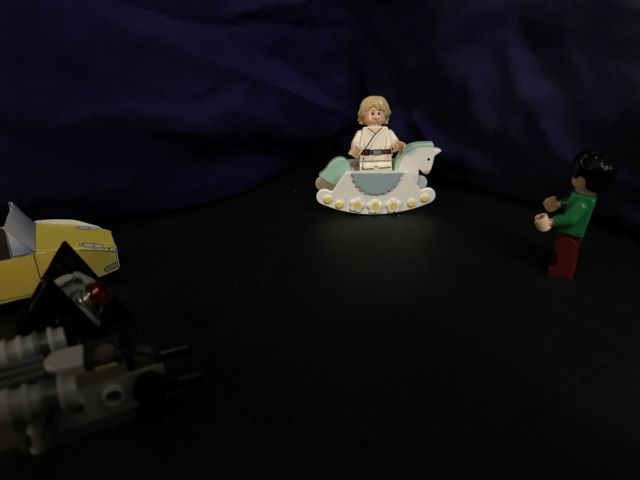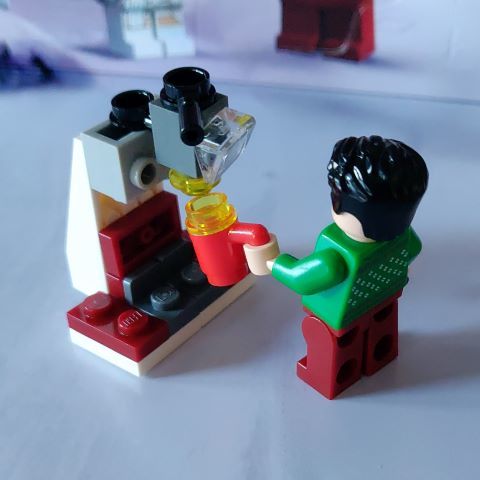Most of you went to Minicon, I went to Wisconsin. The major visits were to The House on the Rock and The Milwaukee Art Museum. I drove to Spring Green on Thursday, saw HotR on Friday, drove to Milwaukee on Friday early evening, saw MAM on Saturday and drove home on Sunday morning.
The House on the Rock was *a lot*. I would have paid $35 to just see the carousel, and I understand why people think it's magic. There's also a vast collection of every goddamn thing in the world with no descriptions. Like I said, it's just *a lot*, and a way too much of that lot is a celebration of the inhumane treatment of elephants. There's more ivory than I've ever seen in the sum of all museums that I've been to and that contained ivory. There's a room of dioramas of circuses where people terrorize elephants and big cats while other people watch. Every room has more to look at than a person can comprehend, and the few descriptions that exist are incomplete or impossible.
Here are some guns.
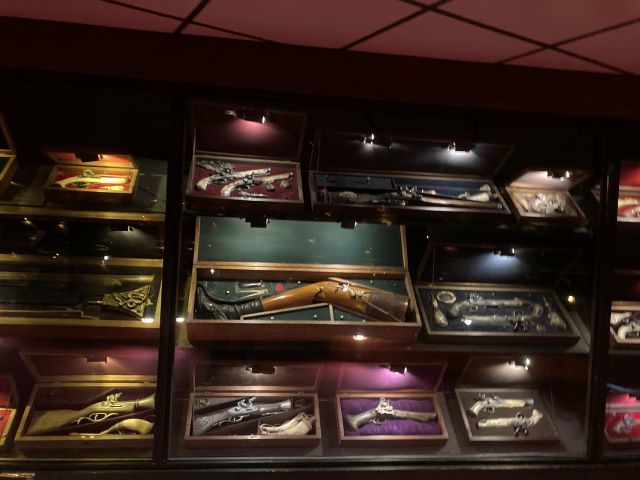
Image shows a collection of guns in gun cases. The central gun case contains a woman's wooden prosthetic leg, wearing a fancy black shoe and with a small gun built into the thigh. There are no descriptions for anything in this room.
Here's something from "The Organ Room." The Organ Room includes a live human woman who hides in a poorly lit crevasse of the room. She will leap out and surprise you with several facts, including that the chandelier is "one of the largest" chandeliers in the world.
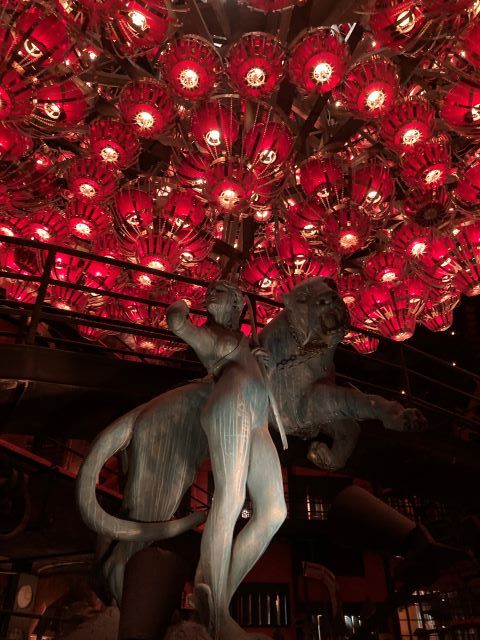
Image shows a large chandelier made of hundreds of smaller chandeliers. In front of the Droste Effect chandelier, there is a statue of a naked woman controlling a chained tiger. Why? How the hell would I know?
I would even recommend going for the entire horrifying museum in all its glory and the carousel in the middle of the experience. You can find pictures and video of the carousel online, but there is probably no way to accurately depict it.
Some travel advice that I have received is "stay at the second cheapest hotel in any region." That's exactly what a person should do in Spring Green, WI. That is NOT what a person should do in Milwaukee. The second cheapest hotel in Spring Green is the Don Q Inn. There's a round fireplace surrounded by barber chairs bolted to the floor. The floor feels oddly but not disturbingly bouncy, and there's a mini-fridge in the room.
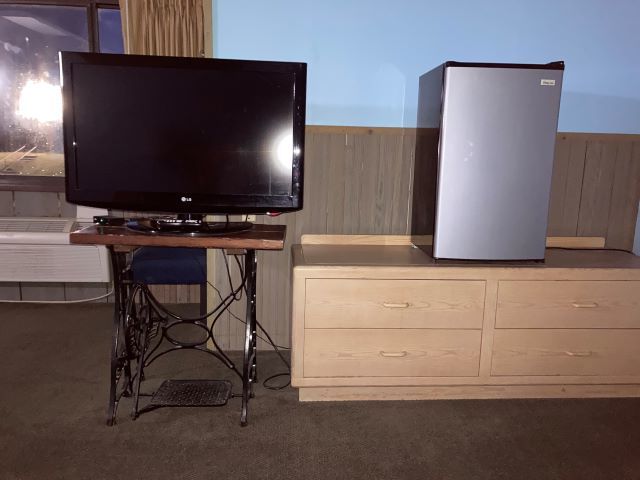
Image shows an old sewing machine table with the sewing machine removed. The table is used as a TV stand. Next to the TV stand, there is a wide, short dresser with a mini-fridge set on top of it.
There's also an airplane outside on the front lawn, signed by Farah Fawcett for no reason. This is the most correct hotel to stay at if you're visiting The House on the Rock. If you're in Spring Green to see Taliesin, you should instead try to find a hotel where the roof leaks. The Don Q Inn had many random objects around the hotel. It had no windmills, and I can't imagine why you'd think it should, you weirdo.
In Milwaukee, I stayed at The Days Inn and Suites by Wyndahm. The room was a brightly colored dump with many things that needed repair, but I wouldn't have cared if it wasn't for the 2AM announcements. I couldn't quite make out what was being said, but I assume it was this:
FUCK ATTENTION FUCK DAYS INN GUESTS DID FUCKFUCK YOU KNOW THAT FUCKING MILWAUKEE IS THE FUCKFUCKFUCK SERIAL KILLER VIOLENCE (Door slams) CAPITOL OF THE WORLD AND ALSO KONERAK SINTHASOMPHONE (door slams) MIGHT STILL BE ALIVE TODAY (door slams) IF NO ONE HAD CALLED THE POLICE AND ONE OF FUCKFUCKFUUUUUUUUCK THE MILWAUKEE POLICEMEN RETIRED AND THE OTHER WAS PROMOTED. AND NOW, FOR YOUR BEDTIME ENJOYMENT, I SHALL SING SOME OF THE SCARIEST NOISES ANYONE HAS EVERY IMAGINED! FUCK! WE HOPE YOU ENJOY YOUR STAY.
Milwaukee is a perfectly nice city, and I'll visit again, but next time I'm staying closer to the lake, and I'll pay the extra $50/night. Jesus Christ.
The American Midwest has great art museums. The Milwaukee Art Museum is a fine example. What sets it apart from other fine museums is that it has a noticeably small collection of plundered art. Some large portion (a third?) of the collection was from the Germany, or Germanic speaking countries. They also went to a lot of trouble to show the art in some context.
One room had displayed objects with descriptions, and then young artists' contributions to the context in drawers below the display cases.
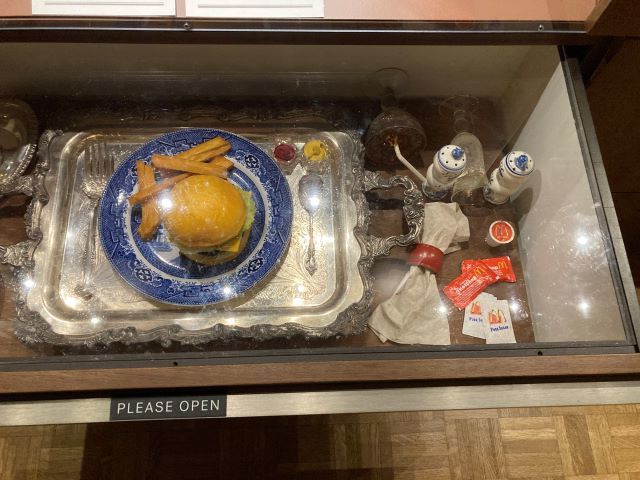
Description from the museum:
The contents of this drawer were designed by participants of the museum's Teen Leadership Program: Tyree Anderson, Sarah Biskowitz, Margaret French, Froylan Hernandez, Emmanuel Johnson, Renee Marfitt, Michael Muth and Jack West.
Many of the objects in this gallery, such as the dishware, weaponry and scientific instruments were originally created to serve a specific function. But when these objects become valued as collectibles, they were stripped of their function, cleaned and polished, and placed on a shelf to be admired. What would it be like to introduce function to museum objects?
There was even a room of "problematic" art with descriptions, presented alongside quotes from Fredrick Douglas. It's weird to take photos in a museum, so the only ones I took were to remember specific pieces, and sometimes I just didn't because I didn't want people to think I was uncouth. If I learned anything about art at the House on the Rock, it's that images are not experiences.
While I was there, a group was setting up to just meditate with this painting for an hour.
Francisco de Zurbarán’s “Saint Francis of Assisi in His Tomb”

Description from the Museum: This somber, haunting image of the ascetic Saint Francis typifies the work of one of Spain’s most important Golden Age painters. As is characteristic, Zurbarán depicted the saint alone, in a dark, featureless space, and lit his humble, homespun monk’s robe with dramatic, raking light that also catches on the upturned skull he holds as well as his left foot, which seems to stride into the viewer’s space. Saint Francis was of particular significance to Spain’s monastic communities, which were deeply impacted by the Counter-Reformation. This work was commissioned for Don Gaspar de Guzmán, Count-Duke of Olivares, who was a high-ranking nobleman, close advisor of King Philip IV, and ultimately Prime Minister of Spain (1621–1643).
Their guide expressed sorrow that most museum patrons spend only fifteen seconds with a piece of art, even if it's moving to them. The exercise was to spend time really thinking about what went into the creation.
"Oh yeah?! Well maybe if you had shittier art and less of it, I wouldn't need to hurry through! Did you ever think of that?"
I saw dozens of things that made me think "This is my favorite!" and after a while I accepted that the museum has a lot of great stuff. Everyone needs more whimsey, so here's that.

Image shows beer steins in a glass case. The steins are in the shape of a hot air balloon, a round man with a beard, a skull, a happy radish, and "Father Jahn."

Image shows the other side of the display case of steins. These steins are in the shape of a pug dog, a singing pig, a frog, and an owl.
The Catastrophe by Eduard von Grützner

Image shows an oil painting of a man who has dropped a basket of wine bottles and landed on his butt. His shoe has fallen off and is just past his foot. He is looking irritated and staring at the broken glass and red wine stained on the stone walkway. Near him, there is a large wooden wine cask with ornately carved scrollwork. Another man is looking towards what has happened, but starting to hold his head in some combination of confusion/annoyance/embarrassment. Both men appear to be wearing brown monk's robes and blue work aprons.
And now I've been typing for a long time. So maybe some more later and maybe not.








